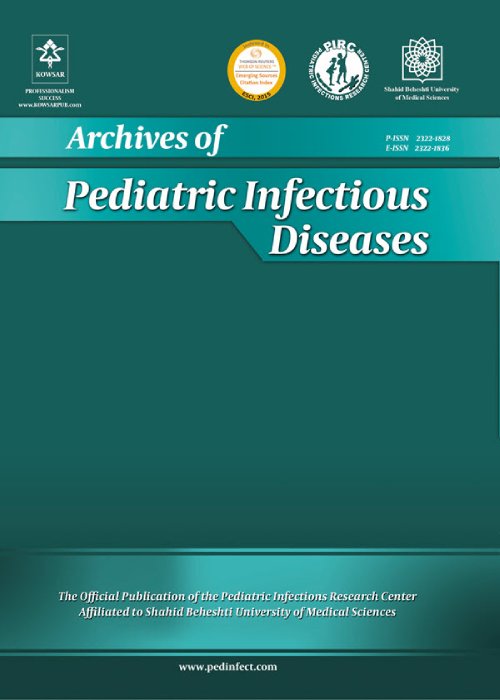Children's Privacy in Pediatric Wards in Teaching Hospitals Affiliated to Shahid Beheshti University of Medical Sciences: 2014 - 2015
Author(s):
Abstract:
Background
Patients privacy is an important ethical responsibility in medicine and an inseparable part of treatment. Childrens privacy is no exception. Childrens rights to privacy are recognized under the Childrens Rights Convention as part of good medical practice.Objectives
Few studies have examined childrens privacy in Iran or in other countries. Thus, the present study was designed to investigate views expressed by relatives who accompanied sick children to the hospital about various aspects of the childrens privacy.Methods
In this descriptive cross-sectional study, data on two dimensions of privacy (informational privacy and physical privacy) of children in pediatric wards were collected using a researcher-made questionnaire from 90 individuals who accompanied children (90 children, 57.8% boys and 38.9% girls) to hospitals (Imam Hossein and Mofid) affiliated to Shahid Beheshti University of Medical Sciences. The data were analyzed using SPSS-18 software. Pearsons correlation coefficients were calculated, and t-tests and ANOVAs were performed.Results
With regard to the two dimensions of privacy, informational privacy was respected more than physical privacy. No significant relationship was observed between the observance of privacy and duration of the hospital stay or admission ward, but there was significant linear correlation between the number of beds in a room and informational and physical privacy. The mean score for respecting privacy increased in accordance with the childs age, with the overall mean score significantly higher in the 11 - 14-y age group than the other age groups. Information disclosure occurred mainly through conversations with parents (52.2%) and during rounds (30%). Very little information disclosure (1.1%) occurred via discussions between personnel and discussions with parents. Hospital authorities investigated 40% of complaints about privacy violations or disclosure of a sick childs information.Conclusions
The results showed that the level of respect for informational privacy was relatively acceptable. However, the level of respect for physical privacy was poor. Therefore, it is essential to provide appropriate training on the issue of childrens privacy, especially physical privacy (e.g., using separate rooms and ensuring that medical staff knock before entering a room), and to ensure that rules governing childrens privacy are followed.Keywords:
Language:
English
Published:
Archives of Pediatric Infectious Diseases, Volume:5 Issue: 1, Jan 2017
Page:
1
magiran.com/p1638085
دانلود و مطالعه متن این مقاله با یکی از روشهای زیر امکان پذیر است:
اشتراک شخصی
با عضویت و پرداخت آنلاین حق اشتراک یکساله به مبلغ 1,390,000ريال میتوانید 70 عنوان مطلب دانلود کنید!
اشتراک سازمانی
به کتابخانه دانشگاه یا محل کار خود پیشنهاد کنید تا اشتراک سازمانی این پایگاه را برای دسترسی نامحدود همه کاربران به متن مطالب تهیه نمایند!
توجه!
- حق عضویت دریافتی صرف حمایت از نشریات عضو و نگهداری، تکمیل و توسعه مگیران میشود.
- پرداخت حق اشتراک و دانلود مقالات اجازه بازنشر آن در سایر رسانههای چاپی و دیجیتال را به کاربر نمیدهد.
In order to view content subscription is required
Personal subscription
Subscribe magiran.com for 70 € euros via PayPal and download 70 articles during a year.
Organization subscription
Please contact us to subscribe your university or library for unlimited access!


